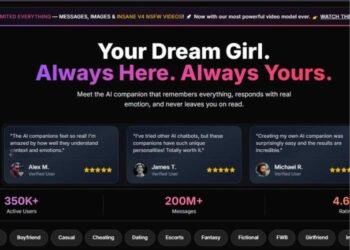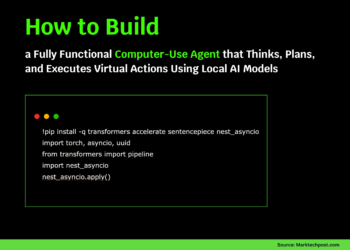Both GPUs and TPUs play crucial roles in accelerating the training of large transformer models, but their core architectures, performance profiles, and ecosystem compatibility lead to significant differences in use case, speed, and flexibility.
Architecture and Hardware Fundamentals
TPUs are custom ASICs (Application-Specific Integrated Circuits) engineered by Google, purpose-built for highly efficient matrix operations required by large neural networks. Their design focuses on vector processing, matrix multiplication units, and systolic arrays—leading to exceptional throughput on Transformer layers and deep integration with TensorFlow and JAX.
GPUs, dominated by NVIDIA’s CUDA-capable chips, use thousands of general-purpose parallel cores alongside specialized tensor units, high-bandwidth memory, and complex memory management systems. While originally designed for graphics, modern GPUs now offer optimized support for large-scale ML tasks and a wider variety of model architectures.
Performance in Transformer Training
- TPUs outperform GPUs for massive batch processing and models directly compatible with their architecture, including most TensorFlow-based LLMs and transformer networks. For example, Google’s v4/v5p TPUs can be up to 2.8 times faster at training models such as PaLM and Gemini compared to some previous TPUs—and consistently edge out GPUs like the A100 for these workloads at scale.
- GPUs deliver strong performance for a diverse set of models, especially those using dynamic shapes, custom layers, or frameworks other than TensorFlow. GPUs excel in smaller batch sizes, unconventional model topologies, and scenarios requiring flexible debugging, custom kernel development, or non-standard operations.
Software Ecosystem and Framework Support
- TPUs are tightly coupled with Google’s AI ecosystem, primarily supporting TensorFlow and JAX. PyTorch support is available but less mature and less widely adopted for production workloads.
- GPUs support nearly every major AI framework—including PyTorch, TensorFlow, JAX, and MXNet—enabled by mature toolchains like CUDA, cuDNN, and ROCm.
Scalability and Deployment Options
- TPUs scale seamlessly via Google Cloud, allowing the training of ultra-large models on pod-scale infrastructure with thousands of interconnected chips for maximum throughput and minimal latency in distributed setups.
- GPUs provide broad deployment flexibility on cloud, on-premises, and edge environments, with multi-vendor availability (AWS, Azure, Google Cloud, private hardware) and extensive support for containerized ML, orchestration, and distributed training frameworks (e.g., DeepSpeed, Megatron-LM).
Energy Efficiency and Cost
- TPUs are engineered for high efficiency in data centers, often delivering superior performance-per-watt and lower total project costs in compatible workflows.
- GPUs are catching up with greater efficiency in newer generations, but often entail higher total power consumption and costs for ultra-large production runs versus optimized TPUs.
Use Cases and Limitations
- TPUs shine in training extremely large LLMs (Gemini, PaLM) within the Google Cloud ecosystem using TensorFlow. They struggle with models requiring dynamic shapes, custom operations, or advanced debugging.
- GPUs are preferred for experimentation, prototyping, training/fine-tuning with PyTorch or multi-framework support, and deployments needing on-prem or diverse cloud options. Most commercial and open-source LLMs (GPT-4, LLaMA, Claude) run on high-end NVIDIA GPUs.
Summary Comparison Table
| Feature | TPU | GPU |
|---|---|---|
| Architecture | Custom ASIC, systolic array | General-purpose parallel processor |
| Performance | Batch processing, TensorFlow LLMs | All frameworks, dynamic models |
| Ecosystem | TensorFlow, JAX (Google-centric) | PyTorch, TensorFlow, JAX, wide adoption |
| Scalability | Google Cloud pods, up to thousands of chips | Cloud/on-prem/edge, containers, multi-vendor |
| Energy Efficiency | Optimal for data centers | Improved in new generations |
| Flexibility | Limited; mostly TensorFlow/JAX | High; all frameworks, custom ops |
| Availability | Google Cloud only | Global cloud and on-prem platforms |
TPUs and GPUs are designed for different priorities: TPUs maximize throughput and efficiency for transformer models at scale using Google’s stack, while GPUs offer universal flexibility, mature software support, and broad hardware choice for ML practitioners and enterprise teams. For training large transformer models, select the accelerator that aligns with model framework, workflow needs, debugging and deployment requirements, and scaling ambitions for your project.
The best 2025 training benchmarks for large transformer models are currently achieved by Google’s TPU v5p and NVIDIA’s Blackwell (B200) and H200 GPUs, according to MLPerf and independent deep learning infrastructure reviews.
Top TPU Models and Benchmarks
- Google TPU v5p: Delivers market-leading performance for training LLMs and dense transformer networks. TPU v5p offers substantial improvements over previous TPU versions, allowing massive scale (up to thousands of chips) within Google Cloud pods and supporting models up to and beyond 500B parameters. TPU v5p is noted for high throughput, cost-effective training, and class-leading efficiency for TensorFlow/JAX-based workloads.
- Google TPU Ironwood (for inference): Optimized for inference with transformer models, achieving best-in-class speed and lowest energy consumption for production-scale deployments.
- Google TPU v5e: Delivers strong price-performance, especially for training large models on a budget, with up to 70B+ parameters. TPU v5e can be 4–10× more cost-efficient than similarly sized GPU clusters for large LLMs.
Top GPU Models and Benchmarks
- NVIDIA Blackwell B200: The new Blackwell architecture (GB200 NVL72 and B200) shows record-breaking throughput in MLPerf v5.0 benchmarks, achieving up to 3.4× higher per-GPU performance than the H200 for models like Llama 3.1 (405B params) and Mixtral 8x7B. System-level speedups with NVLink domains allow for 30× cluster-wide performance compared to older generations.
- NVIDIA H200 Tensor Core GPU: Highly efficient for LLM training, succeeding the H100 with greater bandwidth (10TB/s), improved FP8/BF16 performance, and fine-tuned for transformer workloads. Outperformed by Blackwell B200 but still the most widely supported and available option in enterprise cloud environments.
- NVIDIA RTX 5090 (Blackwell 2.0): Newly launched in 2025, offers up to 104.8 TFLOPS single-precision performance and 680 fifth-gen Tensor Cores. It’s ideal for research labs and medium-scale production, especially when price-to-performance and local deployment are primary concerns.
MLPerf and Real-World Highlights
- TPU v5p and B200 demonstrate the fastest training throughput and efficiency for massive LLMs, with B200 delivering 3× speedup over prior generations and MLPerf confirming record token/second rates in multi-GPU NVLink clusters.
- TPU pods retain an edge in price-per-token, energy efficiency, and scalability for Google Cloud-centric TensorFlow/JAX workflows, while Blackwell B200 dominates MLPerf for PyTorch and heterogeneous environments.
These models represent the industry standard for large transformer training in 2025, with both TPUs and GPUs delivering state-of-the-art performance, scalability, and cost-efficiency depending on framework and ecosystem.
Feel free to check out our GitHub Page for Tutorials, Codes and Notebooks. Also, feel free to follow us on Twitter and don’t forget to join our 100k+ ML SubReddit and Subscribe to our Newsletter.
















